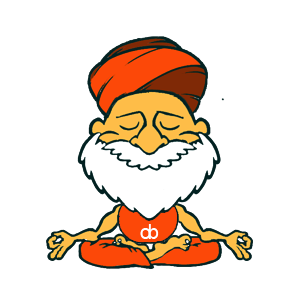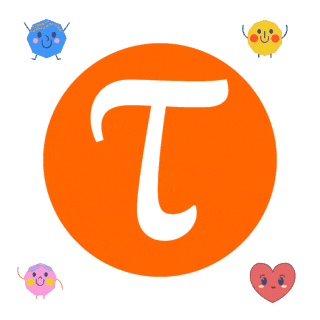Title: The Intersection of Creativity and Logic: Careers in UX Research
Introduction:
In the digital age, user experience (UX) has become a critical factor in the success of products and services. UX research plays a pivotal role in understanding user behavior, preferences, and needs, ensuring that digital experiences are intuitive, engaging, and user-friendly. The field of UX research combines creativity and logic, blending qualitative and quantitative methodologies to inform design decisions. In this blog post, we will explore the exciting and rewarding careers in UX research, highlighting the unique intersection of creativity and logic in this field.
UX Researcher:
As a UX researcher, your role is to understand users' needs and preferences through various research methods. You conduct user interviews, surveys, usability tests, and analyze data to gain insights into user behavior and inform design decisions. You collaborate with designers, product managers, and developers to create user-centered digital experiences.
Being a UX researcher requires a blend of analytical thinking, empathy, and creativity. You need to analyze data to uncover patterns and trends while also empathizing with users to understand their motivations and emotions. Your research insights guide the design process, ensuring that products and services meet user expectations.
UX Designer:
While UX researchers focus on understanding user needs, UX designers translate those insights into visually appealing and functional designs. UX designers work closely with UX researchers to create wireframes, prototypes, and interactive designs that provide intuitive and seamless user experiences.
As a UX designer, you combine your understanding of user behavior with your creative skills to design user interfaces that are visually appealing, easy to navigate, and aesthetically pleasing. You collaborate with developers and stakeholders to bring your designs to life, continuously iterating and refining based on user feedback and research insights.
Information Architect:
Information architects focus on organizing and structuring information within digital products or services. They create user-friendly navigation systems, design intuitive content hierarchies, and ensure that users can easily find the information they need.
In this role, you apply both logical and creative thinking to organize complex information in a way that makes sense to users. Information architects collaborate with UX researchers and designers to create information structures that align with user needs and mental models.
Usability Analyst:
Usability analysts evaluate the usability of digital products and services through usability testing, heuristic evaluations, and user feedback analysis. They identify usability issues and provide recommendations to improve the overall user experience.
As a usability analyst, you analyze user interactions, identify pain points, and propose solutions to enhance usability. Your work bridges the gap between research insights and design improvements, ensuring that products and services are user-friendly and intuitive.
UX Strategist:
UX strategists take a holistic approach to UX research, considering the broader context of business goals and user needs. They work closely with stakeholders, conduct market research, and develop strategies that align user experiences with organizational objectives.
As a UX strategist, you combine analytical thinking with strategic planning to guide the overall direction of UX initiatives. You collaborate with cross-functional teams to define UX goals, prioritize design improvements, and ensure a cohesive user experience across multiple touchpoints.
Conclusion:
Careers in UX research offer a unique blend of creativity and logic, requiring a deep understanding of user behavior, empathy, analytical skills, and design thinking. Whether you choose to be a UX researcher, UX designer, information architect, usability analyst, or UX strategist, your work will shape digital experiences, improve user satisfaction, and drive business success.
By embracing the intersection of creativity and logic, you can play a vital role in creating user-centered digital products and services that delight and engage users. UX research is a dynamic and ever-evolving field that allows you to combine your analytical abilities with your passion for understanding human behavior. So, if you're ready to bridge the gap between creativity and logic, consider a career in UX research and be at the forefront of designing meaningful and enjoyable digital experiences.
The Intersection of Creativity and Logic: Careers in UX Research

Reads Categories
APPLY TO JOBS
FEATURED

Becoming Flexible in Setting Goals A Guide for Todays Dynamic Work Environment
In a world where change is the only constant, flexibility in goal-setting is not just a skill, but a necessity. As employees, we often find ourselves in situations where rigid goals can become impractical or even counterproductive. So, how can we learn to set goals that are both ambitious and adaptable? Here are some strategies:
1. Embrace a Growth Mindset
Flexibility in goal-setting starts with a growth mindset. This means viewing challenges and changes not as obstacles, but as opportunities for learning and development.
2. Set 'Adjustable' Goals
When setting goals, consider creating objectives that have room for modification. For example, instead of setting a fixed target, set a range that allows for adjustments based on circumstances.
3. Prioritize and Reassess Regularly
In a dynamic work environment, priorities can shift rapidly. Regular reassessment of your goals ensures that they remain relevant and aligned with current needs and realities.
4. Develop Contingency Plans
When setting a goal, think about potential obstacles and develop contingency plans. This proactive approach allows you to adapt more quickly if the situation changes.
5. Seek Feedback and Collaborate
Regular feedback from colleagues and supervisors can provide new perspectives and insights. Collaboration can also lead to more flexible and achievable goal-setting.
6. Balance Short-term and Long-term Goals
While long-term goals provide direction, short-term goals allow for more immediate adjustments. Balancing the two ensures steady progress while remaining adaptable.
7. Learn from Setbacks
Flexibility in goal-setting means being resilient in the face of setbacks. Analyze what went wrong, learn from it, and adjust your goals accordingly.
8. Stay Informed and Adaptive
Keeping abreast of industry trends and organizational changes can help you anticipate shifts and adapt your goals proactively.
9. Practice Self-Compassion
Be kind to yourself when circumstances require goal adjustments. Flexibility is not a sign of weakness but of intelligence and resilience.
10. Celebrate Flexible Achievements
Recognize and celebrate when you successfully adapt your goals and strategies. This reinforces the positive aspects of being flexible.
Conclusion
In today’s ever-changing work environment, the ability to set flexible goals is crucial. It empowers you to remain effective and relevant, no matter what challenges arise. By adopting these strategies, you can navigate the uncertainties of the workplace with confidence and agility.



